
Let’s get one thing straight: livestreaming in 2025 isn’t just a trend — it’s a full-blown identity. If you’re not branding your content, you’re branding someone else’s. And if you’re relying on third-party platforms, you’re playing by rules that can (and will) change overnight.
That’s why the smartest creators and businesses — from adult entertainers and yoga instructors to underground filmmakers and online educators — are turning to a white label streaming service. In plain terms? You keep your name, your design, your pricing, your rules. The tech? That’s outsourced to the pros. No watermarks, no algorithm games and no one else in your revenue stream.
Whether you’re building a community around niche video content or launching your own on-demand library, a white label setup means your audience lands on your turf, not someone else’s.
In this guide, we’ll cut through the marketing fluff and get real about the five best white label platforms worth your attention — and then we’ll show you how Scrile Stream service can help you build something even more powerful: a custom-built solution that doesn’t just work. It works for you.
Ready? Let’s stop renting. Time to build.
What Is a White Label Streaming Service, Really?

Let’s strip this down to what matters. A white label streaming service means you own the brand, the look, the feel — but you don’t have to build the backend tech from scratch. Someone else handles the servers, video hosting, and security. You handle the experience.
The best part? Nobody knows you didn’t code it yourself.
Unlike cookie-cutter platforms, white label solutions give you full control: your logo, your domain, your payment model, your audience data. You’re not uploading content into someone else’s sandbox. You’re building your own.
Why is this blowing up now? Because creators are done with platform policies that shift like sand. Because businesses want out of the commission trap. And because audiences crave tighter, branded ecosystems — places that feel curated, not generic.
Let’s look at how this plays out in the real world:
- A fitness coach drops YouTube for a custom-branded subscription app, offering tiered memberships and live classes with zero distractions.
- An indie film studio builds its own white label VOD platform, turning a back catalog into a paid streaming library with global access.
- An adult creator launches a fanclub site under their own brand, complete with gated videos, tipping, and community chat. No bans. No shadowbans. Just full freedom.
And the trend is more than anecdotal. According to Dacast, the global video streaming market is on track to exceed $330 billion by 2030, with white label solutions carving out a bigger share each year. Muvi reports a sharp rise in demand for white label video platforms across education, entertainment, and yes — adult content. The shift isn’t just technical. It’s cultural.
Because here’s the truth: in 2025, content is power — but only if you own the pipeline.
That’s the promise of white label video. Real monetization, independence and brand equity.
Top 5 White Label Streaming Services
There’s no shortage of platforms promising you the keys to the kingdom. But when it comes to white label streaming service solutions, the gap between flashy features and real ownership is wide. We’ve cut through the marketing fog to spotlight five platforms that actually deliver — each with their own strengths, weaknesses, and ideal use case.
Let’s break them down, starting with one of the most developer-focused players out there.
Dacast — Strong for Live Events
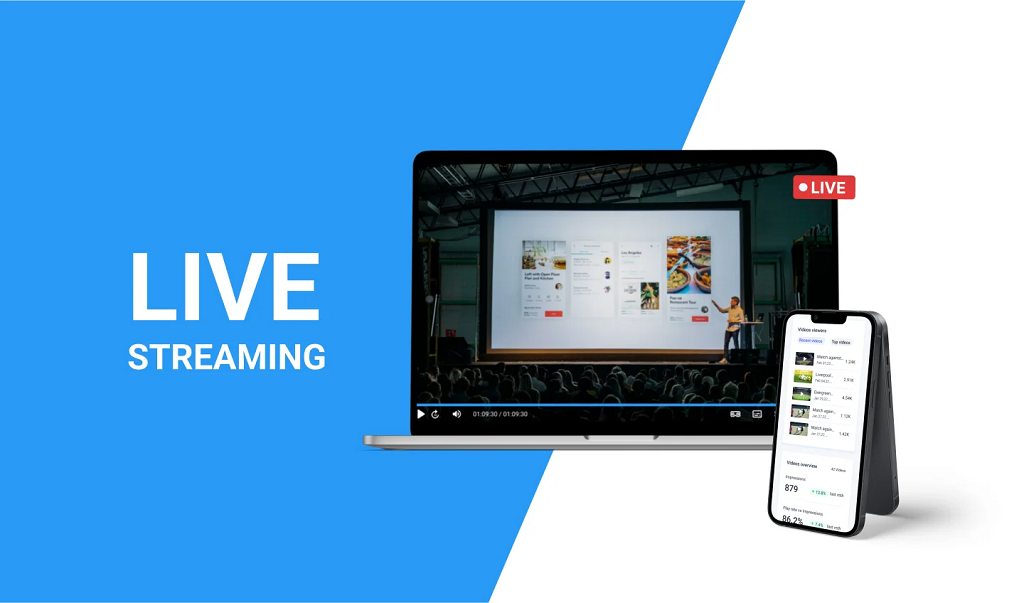
Dacast isn’t here to coddle beginners. It’s built for teams that know what they’re doing — or are ready to get serious fast.
At its core, Dacast is a white label streaming service made for live broadcasting. Think webinars, ticketed concerts, religious services, political rallies — anything where timing, reliability, and monetization matter.
Strengths That Actually Count
What sets Dacast apart is its backbone. You’re not piggybacking on a patchy setup here — you’re tapping into Akamai’s CDN, one of the largest and most reliable content delivery networks in the world. That means your stream isn’t going to buffer the second your viewer’s cousin joins the Wi-Fi party.
The API access is another win. You can integrate Dacast into your app, your membership site, or your internal tools. Want to auto-trigger access codes for event registrants? Done. Embed a branded player on your own site? Also done.
Dacast also includes full white label video player support. You control the look, the logo, the behavior — not just the content.
Built for Monetization
If your goal is to charge for access, Dacast gets it. You can set up pay-per-view, subscriptions, or advertising-based monetization. Want to stream a weekend fitness bootcamp and sell tickets in advance? Easy. Prefer to offer a $5/month archive of past events? Also doable.
And for teams operating internationally, there’s built-in support for multiple currencies and languages. No hacks, no workarounds — it just works.
Where It Falls Short
Now, let’s be honest: this isn’t the cheapest or most beginner-friendly platform. There’s a learning curve, and if you’re a solo creator looking for drag-and-drop simplicity, you might feel overwhelmed. The UI isn’t exactly sleek, and some features are buried behind API docs rather than toggles.
Pricing can also climb fast if you exceed your data limits — especially on high-resolution streams. Be ready to scale smartly.
Ideal For…
Dacast is best for mid-sized businesses, production teams, and event organizers who need stability and are planning recurring or high-stakes live events. If you’ve outgrown free platforms and want full monetization and brand control, it’s a strong contender.
But if you’re just testing ideas or building a personality-driven content site with interactive layers (chat, tipping, AI personas), it might feel a bit too infrastructure-heavy.
Still, if live is your life and ownership matters? Dacast plays hard and doesn’t flinch.
Muvi — OTT Power with Plug-and-Play Tools

If Dacast feels like you’re building a Formula 1 car with a pit crew, Muvi hands you the keys to a luxury SUV — everything’s built in, polished, and ready to drive off the lot. It’s one of the most complete white label streaming service options out there, and it’s aggressively positioned toward media companies, podcasters, and video-first entrepreneurs who want to skip the dev headaches.
Want a Netflix-style site? Check. Native mobile apps? Yup. Smart TV integration? They’ll do that too. And it all comes wrapped in your own brand.
Strengths That Actually Count
Muvi shines in one word: completeness. You’re not just getting a video CMS or streaming API. You’re getting the whole ecosystem — website, apps, CDN, monetization engine, and even SEO tools. This isn’t about cobbling together plugins. It’s plug-and-play, at scale.
Let’s say you’re a podcaster looking to evolve into video episodes with livestream premieres. Muvi lets you offer audio-only streams alongside HD video, package them into playlists, and roll out your own Spotify-meets-YouTube experience. The fact that it handles both formats with the same care is a major plus.
And then there’s the multi-device magic. Unlike many platforms that stop at web and mobile, Muvi pushes into Roku, Apple TV, Amazon Fire, Android TV, and more — all with your logo, your menus, your styling. For content entrepreneurs, this is a fast track to omnipresence.
Monetization? They’ve covered SVOD, TVOD, AVOD, and even PPV bundles. You can lock specific shows behind a paywall, release teaser trailers, or mix free and paid content on your own terms. Plus, there’s support for coupons, geo-blocking, and dynamic ad insertion.
And yep — the whole thing is fully white labeled. Your brand, your rules. No “powered by” tags anywhere.
Where It Falls Short
There’s a reason Muvi doesn’t exactly advertise pricing on the homepage — it’s not cheap. You’ll pay for all this polish, and costs can ramp fast if you need extra storage or want their more premium app tiers.
Also, the control can become overwhelming. For some, Muvi’s dashboard feels like juggling a hundred switches, each with five sub-settings. If you don’t have someone technical on your team, you might end up using just 20% of what’s available.
And here’s a real talk moment: while Muvi promises customization, you’re still working within their design system. It’s more flexible than Vimeo OTT but not a blank canvas. If pixel-perfect UX is your holy grail, it may frustrate you.
Ideal For…
Muvi is best for growing media brands, podcast networks, online fitness platforms, and adult broadcasters who want to launch fast and look pro from day one. If you have a catalog of content (or plan to build one), want mobile + TV presence, and need multi-format support, Muvi delivers hard.
Just make sure you’re ready to budget for the growth — and ideally, have someone on board who can tame its more complex tools.
If you want to jump from creator to network, and do it without hiring 3 different dev teams? Muvi might be your best bet.
Vimeo OTT — Creator Friendly, Brand Limited
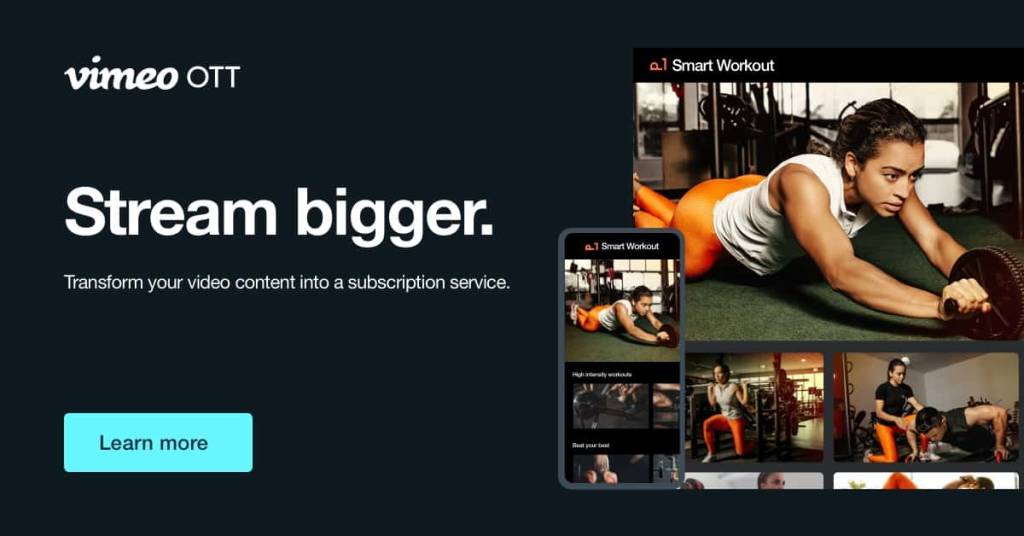
Vimeo has long been the indie filmmaker’s darling — sleek players, crisp visuals, and no YouTube-style chaos. But with Vimeo OTT, they’ve taken a stab at something bigger: offering creators a way to launch their own subscription streaming service with minimal fuss. It’s clean, it’s branded, and it’s very Vimeo — which is both the blessing and the limitation.
In the crowded white label streaming service space, Vimeo OTT appeals to creators who want something that looks professional, without needing a full tech stack or custom dev support. Think: documentaries, workout series, indie lectures, or even tasteful adult content. If your visual quality is high and you don’t want to touch code, this might be your playground.
Strengths That Actually Count
Let’s be clear — the UI/UX is gorgeous. Vimeo OTT delivers a polished front-end straight out of the box. No need to mess with messy layouts or poorly translated player overlays. Your landing pages, video thumbnails, checkout flows — they’re all crisp and user-friendly, with a definite “premium” vibe.
Then there’s the viewer apps. Vimeo provides support for native apps on platforms like Roku, Apple TV, Android TV, and more, making it easy to expand beyond just browser-based experiences. You don’t need to fight the algorithm when you own the screen real estate.
Setting up monetization is also fairly smooth. You can offer SVOD (subscriptions), TVOD (rentals or purchases), or simple pay-per-view. Stripe is baked in, and the revenue flows are reliable. You can even set geographic restrictions and coupon codes for promotions.
Need analytics? Vimeo OTT includes a dashboard for viewer metrics, drop-off points, and subscriber behavior — not enterprise-grade, but solid enough for a small to mid-sized creator business.
And yes, it’s mostly white label video — your branding, your logo, your custom domain. Vimeo stays behind the curtain… for the most part.
Where It Falls Short
The catch? You don’t fully own the platform. You rent a very nice, very polished space from Vimeo — but don’t expect to rearrange the furniture. If you’re looking for deep customization, A/B testing layouts, or building advanced user flows, this isn’t the place. It’s not a white label video streaming platform in the same way as Muvi or Scrile Stream.
And while Vimeo’s support for creators is decent, it’s not exactly fast or hands-on. You’re in their ecosystem, using their tools, on their schedule. If something breaks — especially at scale — you may feel boxed in.
Also worth noting: content policies still apply. Vimeo has stricter terms of service than true “you-own-it” platforms. If you’re pushing boundaries (e.g., edgy adult content, political docs), review their content rules carefully. You’re still playing in someone else’s sandbox.
And pricing? While not sky-high, the cost-to-flexibility ratio can be hard to justify as your audience grows. You may quickly outgrow it, without many migration options.
Ideal For…
Vimeo OTT is ideal for independent creators, fitness instructors, documentary filmmakers, and educators who value style and ease of launch over full control. If you want to look pro, start fast, and focus on your content — without coding or design — it delivers.
It’s not for those building a media empire or planning to monetize user-generated content at scale. It’s more of a “premium boutique” solution — elegant, controlled, but limited in ambition.
Still, if you’re focused on storytelling, quality production, and loyal fans? Vimeo OTT might be the cleanest start you’ll find.
Uscreen — Monetize Everything from Courses to Cams
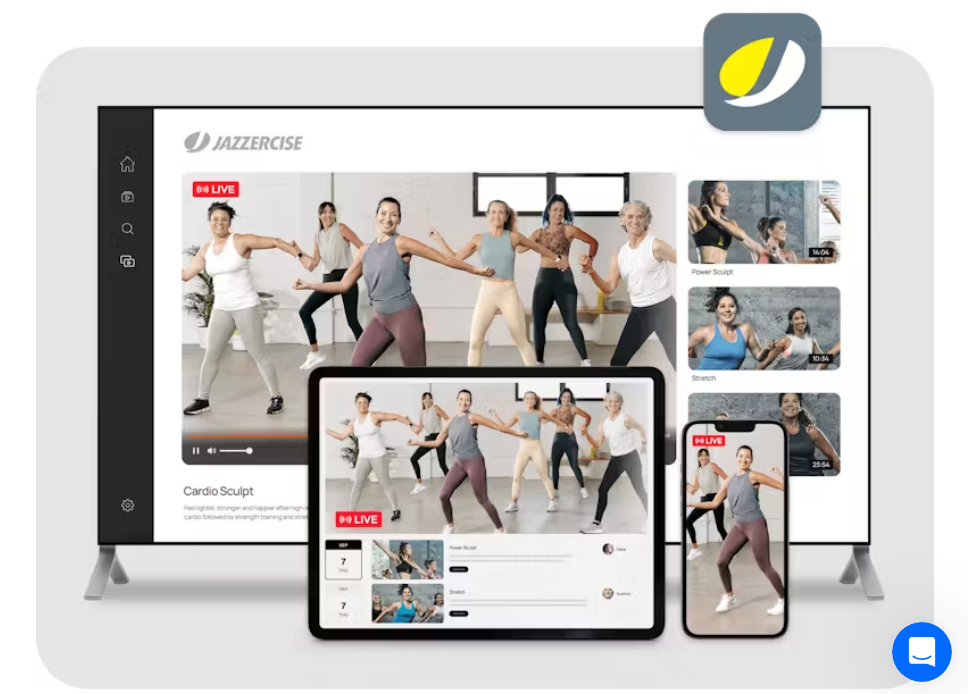
Some platforms feel like you’re just uploading videos into a void. Uscreen? It feels like you’re building an actual business. This is where creators turn into CEOs — especially if you’ve got a niche audience that pays for access, not just views.
Whether you’re a fitness coach, adult performer, meditation teacher, or just someone with content people will pay to see, Uscreen lets you sell it, package it, and build a real subscriber base. It’s a powerful all-in-one white label streaming service that goes way beyond video hosting.
You want to monetize everything — live sessions, recorded content, premium groups, digital products, private chats. Uscreen says, “Cool, here’s the toolkit.”
Strengths That Actually Count
Let’s start with flexibility. Uscreen supports SVOD, TVOD, live pay-per-view, bundles, free trials, coupons, and just about any pricing setup you can think of. Want to run a 30-day challenge with locked videos, or sell lifetime access to a recorded course? Easy.
The community tools are what really push it forward. Uscreen lets you build fan clubs, discussion groups, and even member-only feeds that feel more like Patreon or OnlyFans than your average video site. But here’s the difference — it’s your brand, not theirs.
There’s full support for mobile apps, which is huge. Your members can watch you from a slick iOS or Android app branded with your name. And yes, you get your own domain, too — you’re not sending traffic to someone else’s ecosystem.
Behind the scenes, analytics are strong. You can track viewer retention, revenue per user, churn rates, and more. It’s not just about views — it’s about business growth.
Also, unlike some competitors, Uscreen handles video delivery via a global CDN, so streaming is fast, reliable, and scalable, whether you’re running a meditation library or a spicy premium club.
And if you’re short on time? The onboarding is actually human. They help you launch fast — sometimes in days, not weeks — with a structured rollout system and real support.
Where It Falls Short
Now, all that convenience and control comes at a cost. Uscreen isn’t cheap — especially when you start stacking add-ons like mobile apps or integrations. The pricing model is monthly plus a revenue share, so make sure your margins can support it.
While it’s flexible, it’s not endlessly customizable. You can change logos, colors, page layouts — but if you want full front-end freedom (custom features, wild UX), you might hit some guardrails.
Also, the learning curve can be a bit much for solopreneurs. If you’re not somewhat business-minded or willing to learn the ropes, Uscreen might feel overwhelming.
And while the platform is adult-friendly, you’re still bound by Stripe and other third-party processors. High-risk creators should double-check policies — or consider even more private white label vod platform options.
Ideal For…
Uscreen is ideal for serious creators who treat their content like a business. Coaches, instructors, adult performers, podcasters, language tutors — if you want to own your funnel and scale a subscriber base, this is your arena.
It’s especially useful if you plan to offer memberships, bundle content, or build community. Uscreen does a great job making all of that seamless — and branded.
It’s not ideal if you’re just starting out with no audience or unclear monetization plan. But if you know your niche and you’re ready to go pro? Uscreen’s toolkit will meet you there.
JW Player — Enterprise Muscle Without the Noise
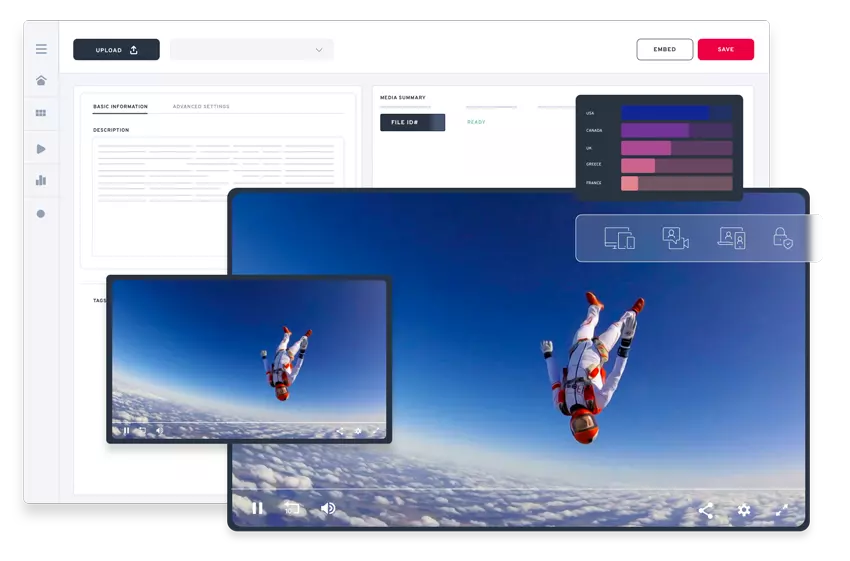
Some platforms scream with features and overwhelm you on day one. JW Player doesn’t. It just works — fast, clean, powerful — and it’s been around longer than most people realize. Originally a media player plugin for YouTube, JW Player grew into one of the most battle-tested white label streaming service solutions out there.
Today, it powers streaming for big broadcasters, OTT startups, adult entertainment companies, and enterprise clients alike. It doesn’t care what vertical you’re in — it just cares about delivering video that looks sharp and loads instantly, anywhere.
This isn’t a “drag and drop” beginner-friendly toy. It’s a full-scale white label video platform built for performance, control, and reach. It’s not trying to hold your hand — it’s giving you the entire toolkit, then letting you run.
Strengths That Actually Count
JW Player’s video infrastructure is world-class. Their global CDN spans across 40+ data centers, delivering lightning-fast streaming with adaptive bitrate tech that keeps the content smooth even on poor connections.
But what makes it a white label powerhouse is the player customization and embedding. You can drop it into any site or app, fully skin it, control autoplay, subtitles, thumbnails, chaptering — even run interactive overlays. Your viewer never knows it’s JW behind the curtain.
The platform supports live streaming, VOD libraries, DRM, ad monetization, and full API access. You can build full-scale SVOD platforms, internal media hubs, or large-scale fan sites.
Security-wise, it checks every box: token-based access, geo-blocking, watermarking, encrypted streams. If you’re in a high-risk niche or handling paid content, JW Player helps you protect it without breaking a sweat.
Their real-time video analytics are sharp, too. You’ll know who’s watching, where they’re dropping off, what devices they’re using — and which content is driving retention.
And they integrate easily with Google Ad Manager and third-party ad networks, so if you want to run pre-rolls, mid-rolls, or overlays, you can turn your content into revenue without needing extra plugins.
Also, one standout feature? Offline viewing via SDK for mobile apps. If you’re building a branded streaming app, that’s huge.
Where It Falls Short
JW Player isn’t for the faint of heart or the short of budget. There’s no free tier, and pricing is enterprise-level from the jump. If you’re launching a hobby project or testing the waters, this might not be your place.
It’s also not a turnkey solution. There are no templates, no wizards. You’ll need developers or at least someone technical to get things polished. The tradeoff is freedom — but freedom requires skill.
And while the player itself is extremely brandable, the broader experience (like subscriber portals or payment flows) may need to be custom-built or connected via other tools. JW is a white label video streaming platform, not a full OTT-in-a-box.
Ideal For…
JW Player is ideal for enterprises, content publishers, and adult networks that want total flexibility with performance baked in. It’s also great for agencies that develop platforms for clients — you can embed JW into your own custom apps, sites, or microsites.
If you’re focused on monetization through ads, analytics-driven content optimization, and a seamless viewer experience across devices, JW delivers.
But be warned: this isn’t plug-and-play. It’s more like rent-a-helicopter, not ride-a-scooter. You bring the vision — JW brings the engine.
Table: Quick Comparison of White Label Platforms
| Platform | Best For | Pricing | Key Features |
| Dacast | Live events, pay-per-view | From $39/mo | Powerful CDN, secure paywall, real-time analytics, customizable player |
| Muvi | Full OTT suites (audio + video + apps) | From $399/mo | End-to-end OTT, branded TV/mobile apps, live & VOD, monetization models |
| Vimeo OTT | Creators wanting simplicity + sleek UX | From $1/subscriber | Viewer apps, branded pages, live streaming, basic analytics |
| Uscreen | Course creators, coaches, adult content | From $149/mo | Subscriptions, tipping, community features, fast setup, detailed analytics |
| StreamTube | Budget startups & micro-niche creators | From $29/mo | Simple setup, ad monetization, limited customization, YouTube import tools |
How to Get Started with White Label Streaming (the Right Way)
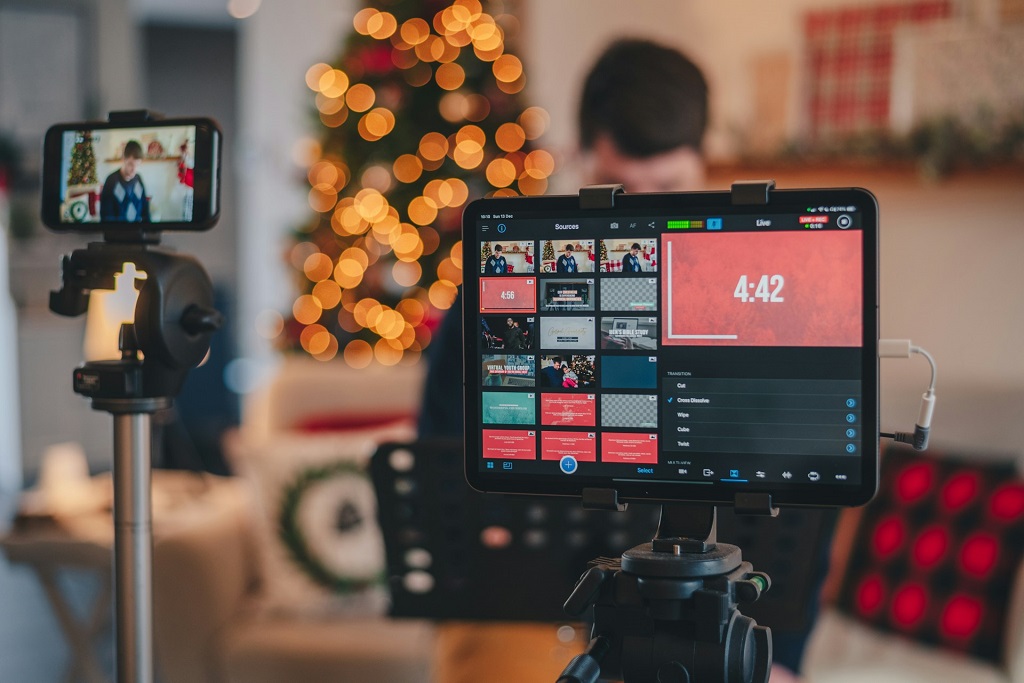
Building your own streaming site sounds exciting — and it is — but if you don’t start smart, you’ll waste time and budget. The first step? Know exactly who you’re building for. Are you a fitness instructor launching weekly sessions? A creator selling NSFW clips to subscribers? A studio releasing indie films? The use case defines everything.
Once your audience is clear, pick a monetization model. Subscriptions (SVOD) work great for loyal communities, while pay-per-video (TVOD) is better for one-off access. Want both? Many platforms now support hybrid setups — just make sure your tech does too.
Branding and payment are next. Choose a layout and user experience that actually reflects your identity, not just a generic template. Don’t forget payment gateways — Stripe, crypto, even direct bank transfers. They’re not all supported equally across providers.
Then comes the real choice: do you go with an off-the-shelf white label streaming service like Dacast or Uscreen and launch in days? Or do you take the longer road and build something custom — with features that actually match your business?
Speed is great, but if you’re planning on long-term growth — especially if you’re in adult, education, or niche entertainment — control matters more than launch speed. Those platforms have limits. Custom platforms don’t.
Finally, don’t forget the legal stuff. If you’re handling adult content, minors, or international payments, get your compliance nailed down before you stream. It saves a lot of trouble later.
Once you’ve done your homework, it’s time to pick the tech that won’t box you in — and that’s where custom white label solutions like Scrile Stream come into play.
Why Scrile Stream Is the Smarter Move

You’ve seen the white label streaming service options: polished, plug-and-play, and fine for some. But what if you don’t want to work around a platform’s rules — or live with design decisions made for someone else’s brand? Scrile Stream flips that equation. It’s not a “platform” in the boxed-product sense. It’s a custom-built streaming foundation that adapts to your business, not the other way around.
Tailored to You — Not the Other Way Around
Scrile Stream is a development service. You don’t sign up. You collaborate.
That difference matters. Because with Scrile Stream, you’re not tweaking an existing template — you’re creating your own white label video streaming platform from scratch. That means your own branding, your own monetization logic, your own roadmap.
Want users to tip during livestreams? Easy. Need different payment tiers based on content categories? Built-in. Want a hybrid of Twitch-style live chat and OnlyFans-style subscriber walls? Done.
A typical Scrile Stream setup can include:
- AI-driven persona engagement (think custom avatars answering messages or doing Q&A)
- Video storefronts for clips, courses, or pay-per-view events
- Fanclubs and community hubs with gated content, chats, or merch integration
- Livestream monetization with tips, reactions, and real-time triggers
You’re not limited to just media, either. Scrile Stream can also integrate booking tools, loyalty rewards, or affiliate referrals. It’s closer to building your own product than using someone else’s.
That makes it perfect for creators who’ve outgrown the algorithm. Or for adult site owners tired of platform rules. Or for coaches who don’t want their lessons buried on someone else’s domain.
Next, let’s talk about what this flexibility actually means in the real world — and why it gives you breathing room that no SaaS option can.
Real Flexibility for Real Businesses
Most off-the-shelf platforms are great until you want to change something. Then you hit a wall. Scrile Stream was built to remove those walls entirely. It’s not about preset modules or rigid workflows. It’s about designing your white label VOD platform exactly how you need it — and having a team that helps you do it.
Let’s break down a few use cases.
- Adult entertainment businesses use Scrile Stream to create private camming communities with tip-trigger integrations, dynamic paywalls, and live interaction models that go far beyond what typical VOD sites allow. Content isn’t just hosted — it’s alive, branded, and interactive.
- Charity organizations build platforms that combine donation-based streaming with merch sales, interactive milestones, and donor recognition tiers. Instead of being limited by Twitch or YouTube’s terms, they own their donor experience outright.
- Wellness coaches and online educators turn Scrile Stream into a hybrid of Zoom, Patreon, and Shopify — running live sessions, selling exclusive content, and offering premium memberships all from one branded ecosystem.
This is possible because Scrile doesn’t just hand you a template — they work with you. Scrile Stream operates more like a product studio than a software vendor. You explain your vision. They turn it into a platform.
Need custom analytics? Localized payment processing? Parental controls? It’s all on the table.
And as your needs evolve — maybe you want to add group chat rooms, loyalty badges, or NFT content drops — the system evolves with you.
That’s the key difference. With Scrile Stream, your platform doesn’t become obsolete when your business grows. It expands with you — seamlessly, securely, and always on-brand.
It’s not the fastest launch. It’s the smartest one for creators who want staying power.
When you’re ready to stop compromising and start owning, Scrile Stream gives you the tools, team, and tech to build something that lasts.
Conclusion: Don’t Just Stream — Build a Platform That Pays
Let’s be real — in a world overflowing with creators, streaming alone doesn’t cut it anymore. If you’re serious about building an audience and a business, you need more than views. You need control. That’s exactly what a white label streaming service gives you: your content, your design, your revenue — on your terms.
Think about what we’ve covered. Platforms like Dacast and Muvi are solid for quick launches and predictable needs. Uscreen and Vimeo OTT offer great tools, especially if you’re a coach or creator with polished content. But they all come with boundaries — what you can customize, how you monetize, even who sees your data.
If your vision’s bigger than that, white label is the next logical move.
And not just any white label. One built from the ground up for your brand. One that adapts as you grow. That’s where Scrile Stream comes in. It’s not a tool you rent. It’s a platform you own.
Whether you’re launching a full adult cam site, a wellness subscription hub, or an indie media outlet with VOD and live events — Scrile Stream gives you the foundation to build something real, scalable, and fully yours.
Because this isn’t about keeping up. It’s about standing out.
So if you’re ready to stop renting space in someone else’s ecosystem, it’s time to talk to the people who can help you build your own.
Content should work harder for you. The audience? It should be yours. And the platform? It needs to pay off.
Reach out to Scrile Stream’s team today and start building your branded video empire.
FAQ: White Label Streaming, Explained
What is a white label streaming service?
It’s a streaming setup that lets you run the show. From logos and color schemes to pricing plans and membership tiers — a white label streaming service gives you a fully branded site without needing to build all the backend tech from scratch. Whether you’re hosting adult content, wellness tutorials, or subscription-based courses, you make it yours from day one.
What is white label video streaming?
This means using a video platform that looks and feels like it’s 100% yours, even though it runs on someone else’s infrastructure. You upload your content, customize the layout, set your rules, and your audience never sees the third-party engine underneath. It’s perfect for creators who want to monetize directly, build communities, and scale without sharing revenue or visibility with a hosting brand.
What’s a white label platform in general?
It’s any software or service that you can take, rebrand, and present as your own — no developer team required. That includes everything from mobile apps to online stores and streaming services. When it comes to media, a white label TV streaming service lets you run your own on-demand or live content channel — complete with subscriber access, payment systems, and viewer engagement tools — all under your own brand.


I couldn’t resist commenting